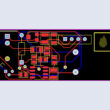Hardware design is a complex industry, with numerous aspects making it a challenging prospect for everyone involved. This is especially true in the current state of things, with the COVID-19 pandemic forcing the majority of workplaces to move towards a remote work orientation.
In addition, just like most industries, hardware has also become increasingly globalized. This means that the designers, marketers, suppliers, manufacturers, distributors and clients may all be in different locations, with teams spread out across the world. Resultantly, there are significant communication gaps and hurdles in productivity which prevent the industry from reaching its maximum potential. In addition, not all stakeholders are well-versed in the technical aspects of the designs, but still need to make decisions regarding their manufacturing, marketing, and distribution.
Therefore, there is a dire need for efficient solutions which connect all these parties and make hardware products easier to design. After extensive time and effort, multi-stakeholder collaboration tools specifically tailored to the hardware industry’s needs have proven to be the best solution to this problem. These tools have a certain set of key components which make them suitable for the complex needs of this business.
How do these tools benefit hardware businesses?
These tools are highly beneficial for businesses, and can make all the difference in commercializing a hardware product. They make the whole product life cycle easier to manage and also optimize the design and testing workflow in a number of other ways.
- Minimize communication gaps
Often, the biggest problem a company may face is miscommunication. This is highly problematic in any industry, but is especially harmful for hardware businesses as one misunderstanding can lead to a product’s whole life cycle to be delayed by months.
Collaborative tools offer features such as annotations and change notifications, so that all stakeholders involved can be on the same page regarding what stage a product is at and what is required for it to proceed further.
- Maximizes productivity
The best aspect of collaborative tools is their ability to maximize productivity. After all, they cut out a large chunk of the engineers’ time spent on arduous tasks like logging in work, and then emailing or calling various relevant members to confirm any changes or get feedback. Such hurdles are a bane for innovation as well, and prevent designers from taking new strides in the industry.
- Easy change management
In hardware design, logging in changes and communicating them is arguably the most irksome task engineers have to carry out. With collaborative tools offering features such as version control and visual differencing, this is made much easier, leaving engineers to improve products and create innovative ones.
- Incorporates all stakeholders
It can be quite difficult to carry out efficient multi-stakeholder collaboration when there’s a mix of technical and non-technical people involved who are spread across the world. With collaborative tools, all stakeholders can be involved in the process and take cue accordingly. For example, the supplier may drop a notification about the shortage of a certain material, and seeing that, the engineers can alter the design requirements accordingly. This leads to better real-time collaboration and astreamlined workflow.
- Makes sharing easier
Leading on from the previous point, all stakeholders can also greatly benefit from the shareability collaborative tools offer. As cloud-based solutions, they allow files with access control to be shared easily. In addition, with annotations and version control, changes can also be made efficiently.
In conclusion, collaborative tools are essential for optimizing hardware businesses in an organized and effective manner. So, pick the best ones for your business, and you’re all set for success!








